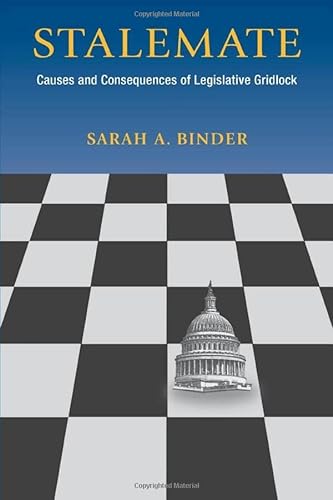9780815709107 - Stalemate: Causes and Consequences of Legislative Gridlock von Binder, Sarah A. (2 Ergebnisse)
Produktart
- Alle Produktarten
- Bücher (2)
- Magazine & Zeitschriften
- Comics
- Noten
- Kunst, Grafik & Poster
- Fotografien
- Karten
-
Manuskripte &
Papierantiquitäten
Zustand
- Alle
- Neu
- Antiquarisch/Gebraucht
Einband
- alle Einbände
- Hardcover
- Softcover
Weitere Eigenschaften
- Erstausgabe
- Signiert
- Schutzumschlag (1)
- Angebotsfoto
Land des Verkäufers
Verkäuferbewertung
-
Stalemate : Causes and Consequences of Legislative Gridlock
Verlag: Brookings Institution Press, 2003
ISBN 10: 0815709102ISBN 13: 9780815709107
Anbieter: Better World Books, Mishawaka, IN, USA
Buch
Zustand: Very Good. Former library book; may include library markings. Used book that is in excellent condition. May show signs of wear or have minor defects.
-
Stalemate : causes and consequences of legislative gridlock.
Verlag: Brookings Institution Press, 2003
ISBN 10: 0815709102ISBN 13: 9780815709107
Anbieter: Kloof Booksellers & Scientia Verlag, Amsterdam, Niederlande
Buch
Zustand: very good. Washington, D.C. : Brookings Institution Press, c2003., Orig. cloth binding. Dustjacket. xiv, 202 p. : ill. ; 24 cm. Includes bibliographical references (p. 161-194) and index. - Gridlock is not a modern legislative condition. Although the term is said to have entered the American political lexicon after the 1980 elections, Alexander Hamilton complained about it more than two hundred years ago. In many ways, stalemate seems endemic to American politics. Constitutional skeptics even suggest that the framers intentionally designed the Constitution to guarantee gridlock. In Stalemate, Sarah Binder examines the causes and consequences of gridlock, focusing on the ability of Congress to broach and secure policy compromise on significant national issues. Reviewing more than fifty years of legislative history, Binder measures the frequency of deadlock during that time and offers concrete advice for policymakers interested in improving the institutional capacity of Congress. Binder begins by revisiting the notion of framers' intent, investigating whether gridlock was the preferred outcome of those who designed the American system of separated powers. Her research suggests that frequent policy gridlock might instead be an unintended consequence of constitutional design. Next, she explores the ways in which elections and institutions together shape the capacity of Congress and the president to make public law. She examines two facets of its institutional evolution: the emergence of the Senate as a coequal legislative partner of the House and the insertion of political parties into a legislative arena originally devoid of parties. Finally, she offers a new empirical approach for testing accounts of policy stalemate during the decades since World War II. These measurements reveal patterns in legislative performance during the second half of the twentieth century, showing the frequency of policy deadlock and the legislative stages at which it has most often emerged in the postwar period. Binder uses the new measure of stalemate to explain empirical patterns in the frequency of gridlock. The results weave together the effects of institutions and elections and place in perspective the impact of divided government on legislative performance. The conclusion addresses the consequences of legislative stalemate, assessing whether and to what degree deadlock might affect electoral fortunes, political ambitions, and institutional reputations of legislators and presidents. The results suggest that recurring episodes of stalemate pose a dilemma for legislators and others who care about the institutional standing and capacity of Congress. Binder encourages scholars, political observers, and lawmakers to consider modest reforms that could have strong and salutary effects on the institutional standing and legitimacy of Congress and the president. Condition : very good copy. ISBN 9780815709107. Keywords : RECHT, Constitutional law, America.


